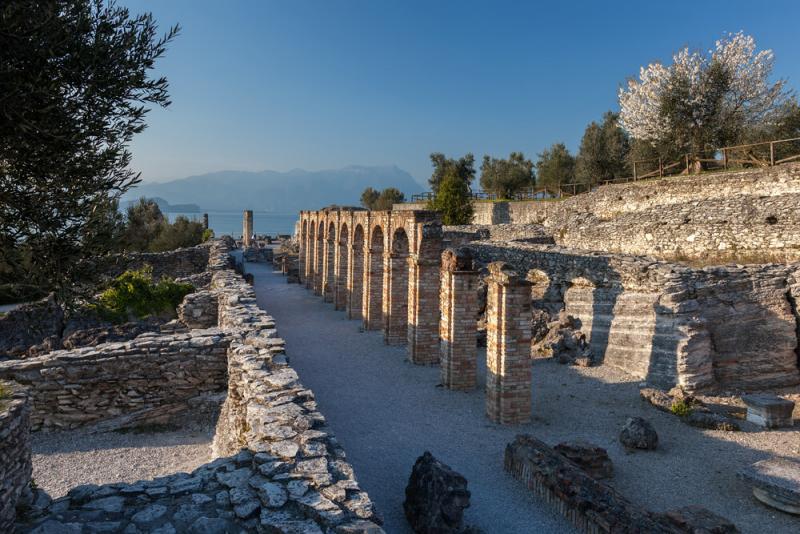Grottoes of Catullus: Northern Italy's Most Impressive Remains of a Roman Villa
ITA:

It’s called ‘Catullus’ Grottoes’, but the archeological complex in pretty Sirmione, a town on the southern shores of Lake Garda, is actually a Roman villa, built between the end of the 1st century BC and 1st century AD.
Why the reference to Catullus? Because the Verona-born Latin poet owned a house there, and, in one of his poems, he heartily describes his return to his much beloved Sirmione. In reality, it has not been possible to locate Catullus’ house, but the name for the Roman villa has stayed in place and is still widely used to identify the archaeological site, despite the fact that the villa was built after Catullus’ death.
The grotto part of the phrase refers to the fact that, when Catullus’ poems were rediscovered in the 15th century, the rooms of the villa had crumbled down and been covered with vegetation so as to appear as caves.
The villa is the most impressive example of a Roman villa in northern Italy and the entire archaeological complex is the most important testimony of the Roman period in the area.
In the 16th century, the villa was a popular destination with illustrious travelers, including the marquise Isabella d'Este Gonzaga and architect Andrea Palladio, who visited the villa to study its construction techniques.
The villa, which covers an area of about two hectares on a rocky spur, featured long porticoes and terraces overlooking the lake. The central part was occupied by an extensive garden, and today houses the Grande Oliveto (Great Olive Grove); throughout the archaeological area, there are currently around 1500 olive groves, some centuries-old, belonging to three different varieties of olives from the Lake Garda area. In recent years, the harvest of olives to produce the historic Grotte di Catullo extra virgin olive oil has been revived.
Lo chiamano “Grotte di Catullo”, ma il complesso archeologico nella graziosa Sirmione, città situata sulle sponde meridionali del Lago di Garda, è in realtà una villa romana, costruita tra la fine del I° secolo aC e il I° secolo dC.
Perché il riferimento a Catullo? Perché il poeta latino originario di Verona lì possedette una casa e, in uno dei suoi poemi, descrive con entusiasmo il ritorno nell’amata Sirmione. In realtà, non è stato possibile individuare la casa di Catullo, ma l’espressione Grotte di Catullo è ancora ampiamente utilizzata per identificare il sito archeologico, nonostante il fatto che la villa sia stata costruita dopo la morte di Catullo.
L’uso della parola ‘grotta’ fa riferimento al fatto che, quando i poemi di Catullo furono riscoperti nel XV° secolo, le stanze della villa erano crollate e ricoperte di vegetazione tanto da apparire come caverne.
La villa è l'esempio più suggestivo di una villa romana nel nord Italia e l'intero complesso archeologico rappresenta la testimonianza più importante in zona del periodo romano.
Nel XVI° secolo, la villa era una destinazione frequentata da illustri viaggiatori, tra cui la marchesa Isabella d'Este Gonzaga e l'architetto Andrea Palladio, che visitò la villa per studiarne le tecniche di costruzione.
La villa, che copre un'area di circa due ettari su uno sperone roccioso, presentava lunghi portici e terrazze che si affacciavano sul lago. La parte centrale era occupata da un ampio giardino, che oggi ospita il Grande Oliveto; in tutta l'area archeologica, ci sono circa 1500 ulivi, alcuni vecchi di secoli, appartenenti a tre varietà di olive della zona del Lago di Garda. Negli ultimi anni è stato ripreso il raccolto delle olive per produrre lo storico olio extra vergine di oliva Grotte di Catullo.











